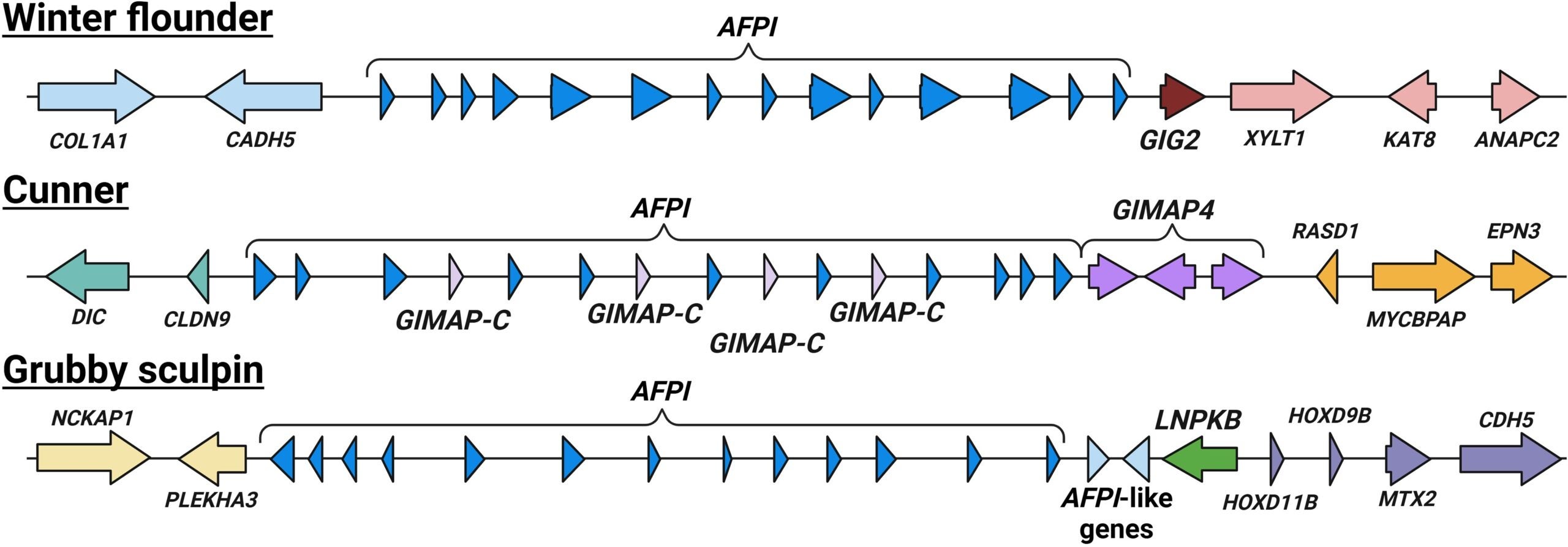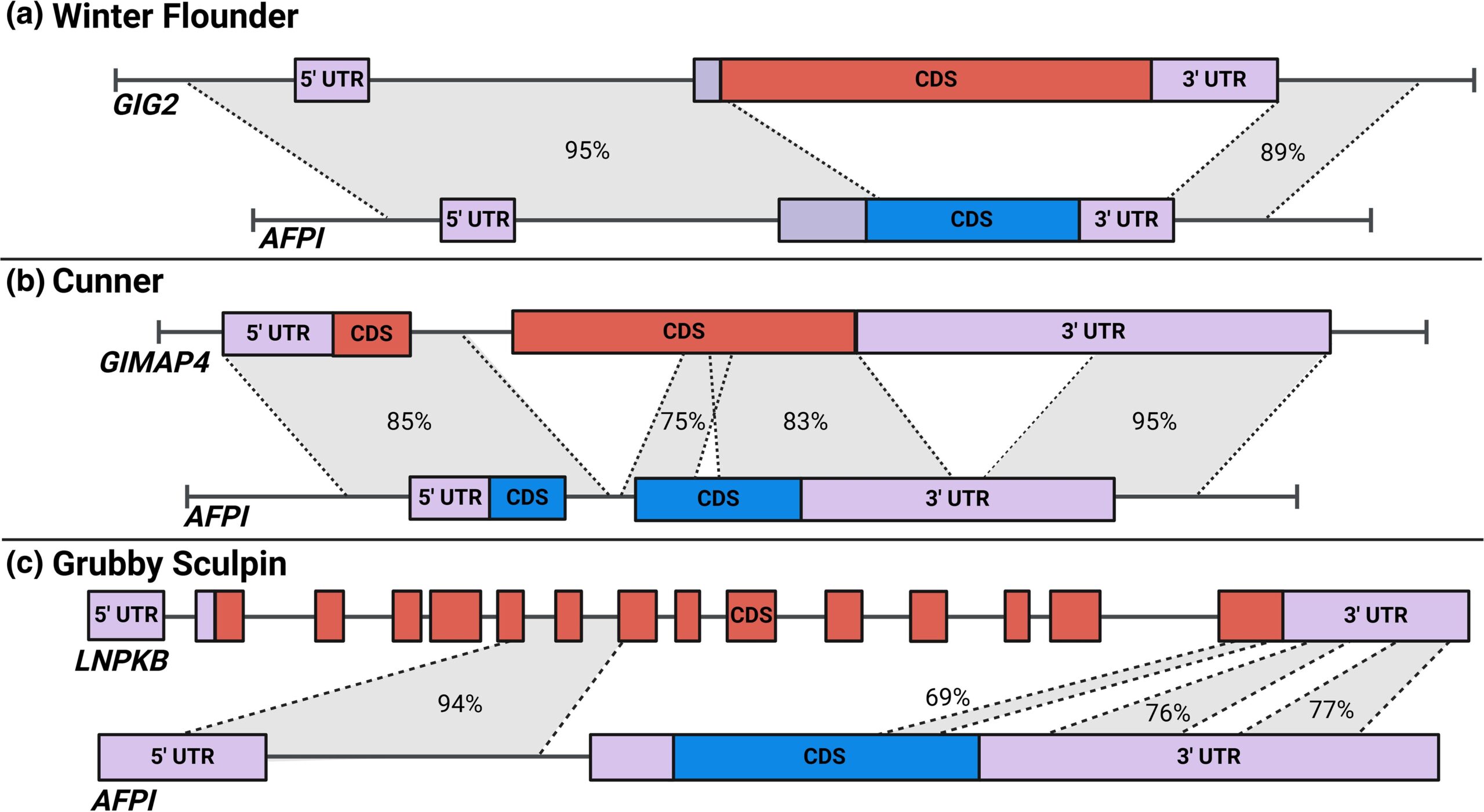The evolution of life is marked by the emergence of novel traits, driven by the birth of new genes. This process of genetic innovation underpins adaptation, shaping the survival and success of species. Understanding how these new genes originate and evolve remains one of biology’s greatest challenges. A recent study on fish antifreeze proteins provides critical insights into the intricate mechanisms driving this phenomenon.
In the icy waters of the polar regions, some fish species have developed a remarkable adaptation: antifreeze proteins (AFPs). These proteins bind to ice crystals in the blood and body fluids, halting their growth and preventing freezing. This adaptation ensures survival in sub-zero temperatures, exemplifying how environmental pressures shape evolutionary innovations.
Fish AFPs are found across multiple polar and subpolar lineages, including codfishes and notothenioids. Despite differences in structure, all types of AFPs—from antifreeze glycoproteins (AFGP) to AFP types I, II, and III—serve the same life-saving function. This makes them a prime example of convergent evolution, where unrelated species develop similar traits independently.
Over the past two decades, researchers have made significant strides in uncovering the origins of AFPs. A groundbreaking study on AFGPs in northern codfishes demonstrated the “de novo” formation of new genes from previously noncoding DNA. This process supports the “proto-ORF” model, which proposes that open reading frames (ORFs) acquire regulatory elements to become functional genes.

In Antarctic notothenioids, the evolution of AFGPs highlights a different pathway. Here, parts of an unrelated trypsinogen gene were co-opted, while a novel coding region evolved from a previously noncoding intron. This partial de novo origination underscores the versatility of evolutionary mechanisms.
Type III AFPs in zoarcid fishes offer another fascinating case. These proteins evolved from a cytoplasmic enzyme through a process called “Escape from Adaptive Conflict” (EAC), where a single protein adapted to serve multiple roles before specializing in one function. In starry flounders, AFP type I arose from a viral resistance gene, GIG2, showing how genes with unrelated functions can be repurposed.
Among AFPs, type I stands out for its broad distribution across unrelated northern marine fish species, including flounders, sculpins, snailfish, and cunner. These fish belong to different taxonomic orders that diverged over 100 million years ago. Despite this phylogenetic distance, their type I AFPs share striking structural and functional similarities, pointing to a polyphyletic origin.
Recent studies employed advanced genomic tools to explore type I AFP evolution. Researchers sequenced the genomes of winter flounder, grubby sculpin, and cunner, alongside related species. They discovered that each lineage’s AFP gene arose from distinct genetic precursors. This finding reveals a remarkable case of convergent evolution at both the functional and protein sequence levels.
Related Stories
The genomic analyses showed that each lineage independently developed a new coding region for ice-binding proteins while repurposing fragments of ancestral genes for regulatory functions. This “partial de novo” origination bridges the gap between traditional models of gene duplication and the emergence of entirely new genes.
The study also introduced new conceptual models to explain the diversity of gene evolution. The “Innovation-Amplification-Divergence” model posits that novel functions can arise before gene duplication.
Similarly, the “Duplication-Degeneration-Divergence” model highlights how degenerated pseudogenes—genes that lost their original function—can evolve into entirely new genes. These models emphasize the dynamic nature of the genome, where even nonfunctional or “junk” DNA can be a source of innovation.
Another intriguing mechanism, the “Gene Fission” model, describes how sibling genes arising from duplication can independently degenerate and redevelop distinct functional domains. These insights shed light on the molecular intricacies of new gene formation and adaptation under extreme environmental pressures.

The evolution of fish AFPs offers a rare opportunity to study the birth of new genes in real time. The ability to trace these proteins’ origins across unrelated species highlights the adaptability of the genome to environmental challenges. The study also underscores the importance of integrating ecological and molecular perspectives to understand evolutionary processes.
By uncovering the diverse pathways leading to similar outcomes, this research challenges the notion of linear evolutionary trajectories. Instead, it presents a complex, branching picture of innovation, where nature’s toolkit is repurposed time and again to meet the demands of survival.
This work, published in Molecular Biology and Evolution, represents a significant step forward in our understanding of molecular evolution. It provides a comprehensive framework for exploring how new genes emerge and evolve, paving the way for future studies on genetic adaptation and resilience.
Note: Materials provided above by The Brighter Side of News. Content may be edited for style and length.
Like these kind of feel good stories? Get The Brighter Side of News’ newsletter.
The post Breakthrough research reveals how new genes evolve appeared first on The Brighter Side of News.